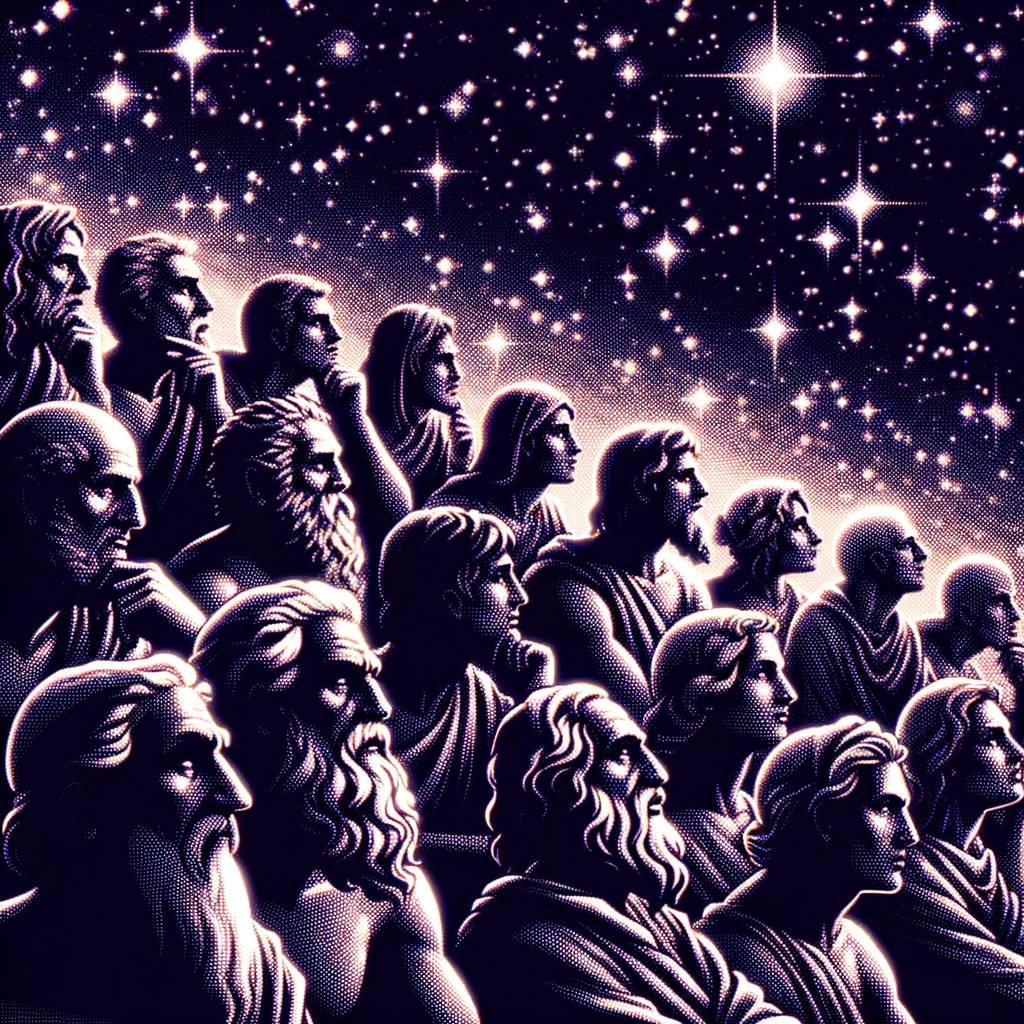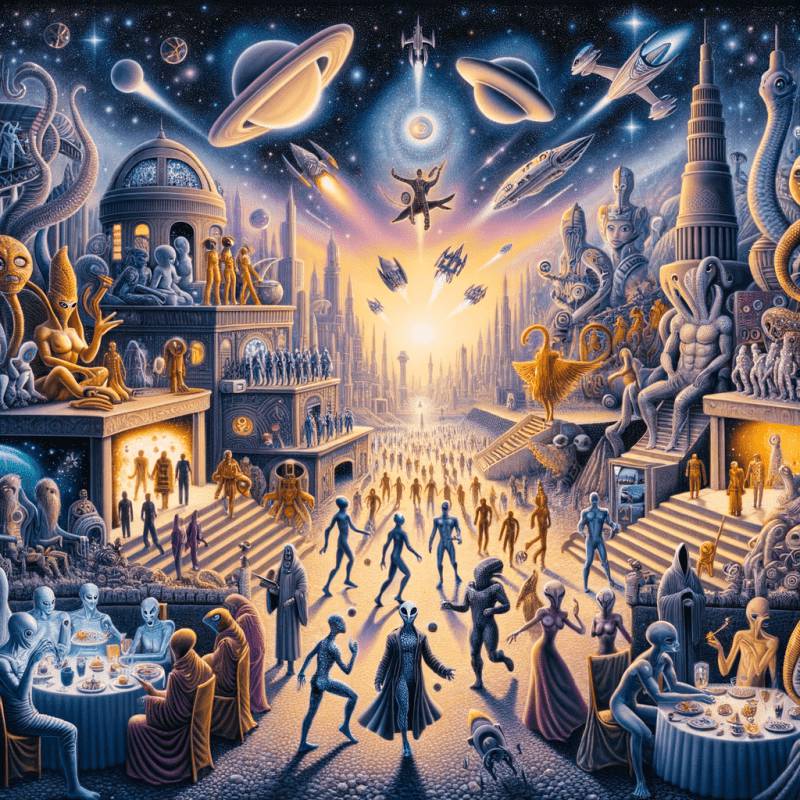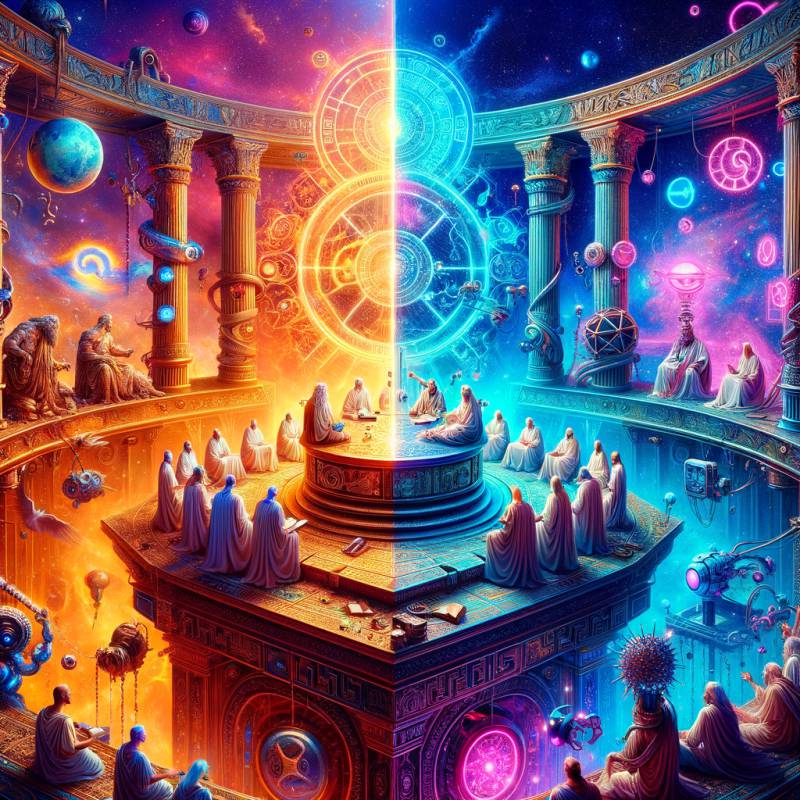Looking at the Stars: What Ancient Philosophers Understood When Staring at the Heavens?
When we gaze at the night sky, we are not only looking at a spectacle of celestial bodies but also a canvas that has inspired countless stories, theories, and philosophies. Ancient philosophers, in particular, found profound meaning and understanding in the stars. Their interpretations have not only shaped our understanding of the universe but have also found their way into the realm of science fiction, influencing books, movies, and TV shows.
The Ancient Philosophers and the Cosmos
The ancient Greeks were among the first to study the stars systematically. They saw the cosmos as an ordered and harmonious system, a concept that has been echoed in many science fiction narratives. For instance, the idea of a harmonious cosmos is central to Isaac Asimov’s “Foundation” series, where the mathematician Hari Seldon develops “psychohistory,” a scientific method that can predict the future of large populations, mirroring the predictable movements of celestial bodies.
Plato’s Allegory of the Cave and Science Fiction
Plato, one of the most influential philosophers of all time, used the heavens to illustrate his philosophical ideas. His famous Allegory of the Cave suggests that humans are like prisoners in a cave, mistaking shadows on the wall for reality. The true reality, according to Plato, is like the stars outside the cave, perfect and unchanging. This concept has been explored in various science fiction narratives, such as the “Matrix” trilogy, where humans are trapped in a simulated reality, unaware of the true world outside.
Aristotle’s Metaphysics and the Universe
Aristotle, another Greek philosopher, proposed a geocentric model of the universe, with the Earth at the center and the stars revolving around it. While this model has been scientifically debunked, the idea of a geocentric universe has been used in science fiction, such as in “The Hitchhiker’s Guide to the Galaxy” by Douglas Adams, where the Earth is depicted as a supercomputer designed to answer the ultimate question of life, the universe, and everything, making it the center of the universe in a metaphorical sense.
Stoicism and the Cosmic Perspective
The Stoics, a group of ancient philosophers, believed in the unity of the universe and saw humans as integral parts of the cosmos. This cosmic perspective is a recurring theme in science fiction. For example, in Arthur C. Clarke’s “2001: A Space Odyssey”, the astronaut Dave Bowman transcends his human form and becomes a star child, symbolizing humanity’s unity with the cosmos.
Conclusion
From the ordered cosmos of the ancient Greeks to Plato’s allegory of the cave, Aristotle’s geocentric universe, and the Stoic’s cosmic perspective, ancient philosophers’ interpretations of the stars have greatly influenced science fiction. These philosophical ideas have been woven into the fabric of science fiction narratives, providing depth and complexity to the genre. As we continue to explore the universe, both scientifically and through the lens of science fiction, we are, in a sense, continuing the philosophical tradition of our ancient ancestors, finding meaning and understanding in the stars.



